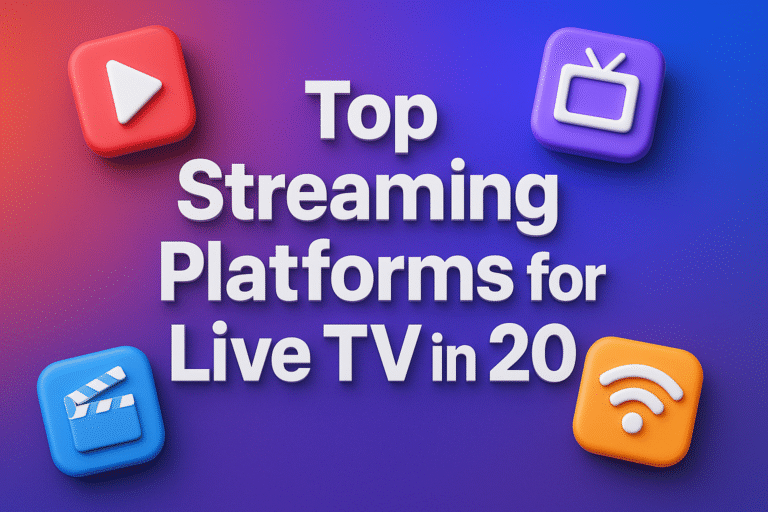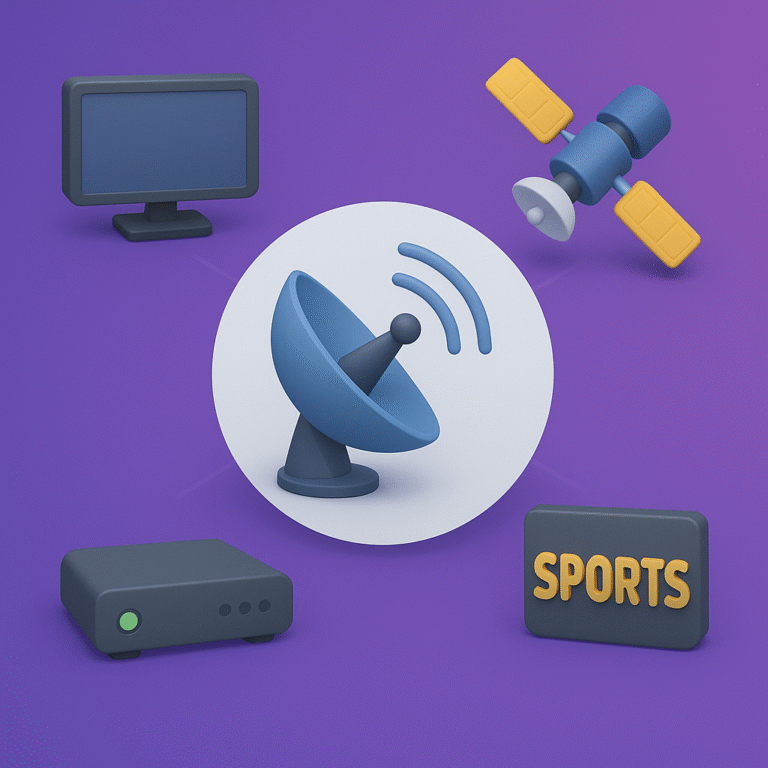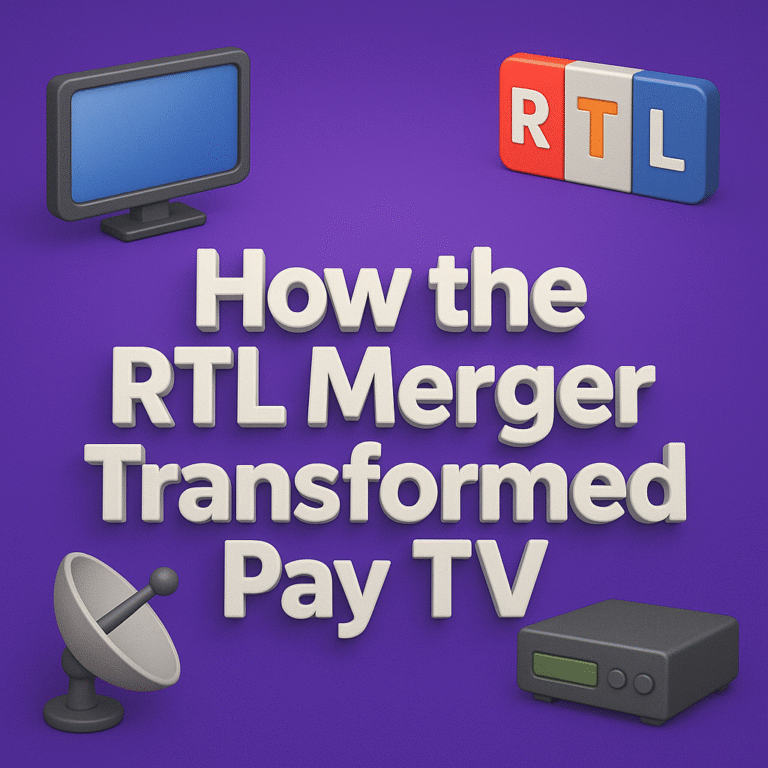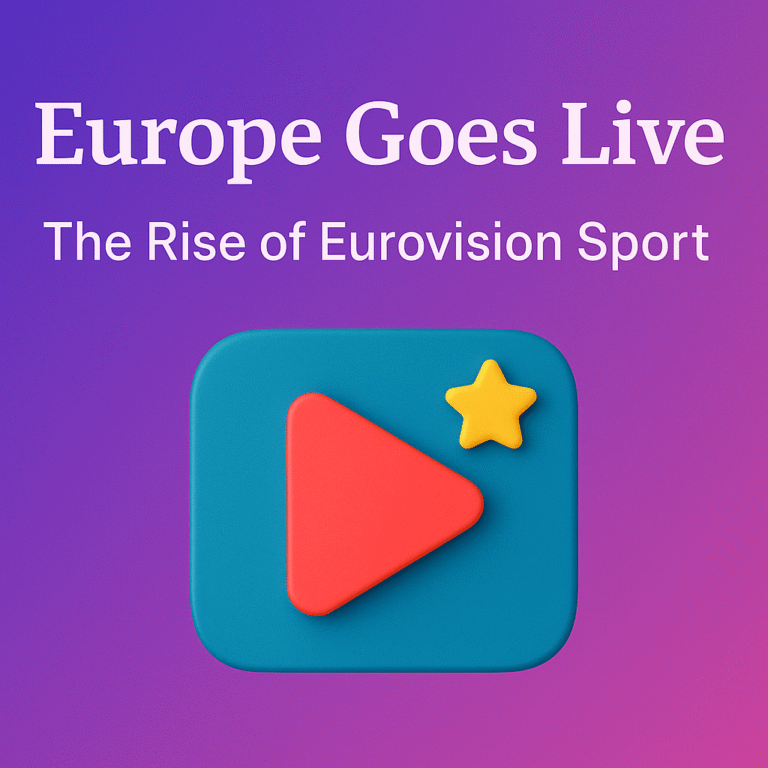How to Watch Swedish Free-to-Air Channels (SVT1, SVT2, TV4) via Satellite in 2025
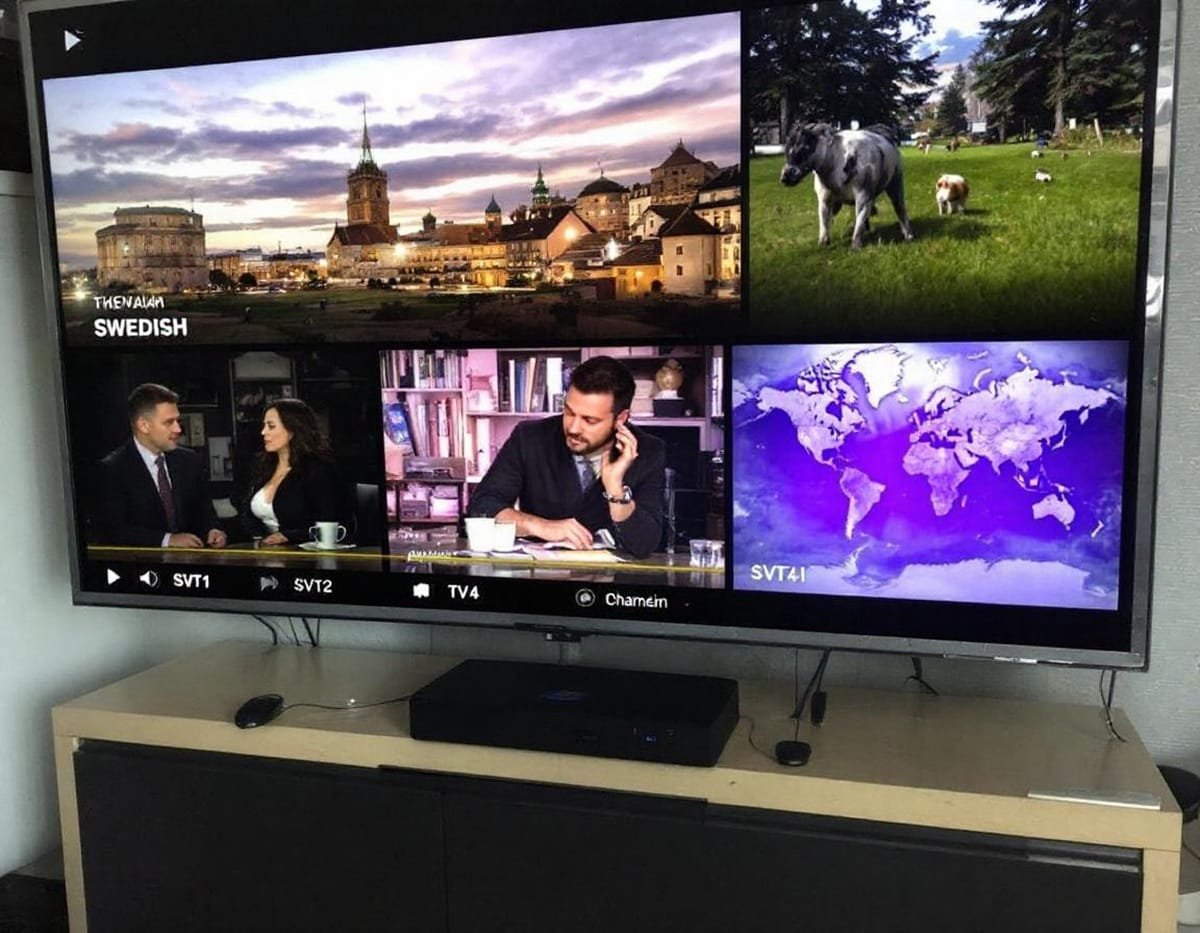
Latest SVT Channels Frequencies Thor Satellite August 2025 Update [New SVT Frequencies Thor 2025, Updated SVT Channel List]
Staying connected to Swedish culture is easy when you can access SVT1, SVT2, and TV4 live from anywhere. Whether you’re a local in Sweden or an expat abroad, having the latest SVT channels frequencies Thor Satellite August 2025 update means you won’t miss out on news, sports, or favorite shows. Many rely on satellite broadcast for its stability and reliable coverage, especially in regions with limited streaming access.
This guide gives you all you need: the most up-to-date SVT frequencies, clear steps for setting up your satellite receiver, and practical ways to compare current SVT satellite frequencies August 2025. You’ll also find helpful tables listing the new SVT frequencies Thor 2025 and updated SVT channel list Thor Satellite for easy reference. By following along, you’ll tune in to Swedish free-to-air channels quickly and enjoy uninterrupted TV straight from Scandinavia.
Latest SVT Channels Frequencies on Thor Satellite: August 2025 Update
If you want crystal-clear Swedish television outside Sweden, keeping up with the latest SVT channels frequencies Thor Satellite August 2025 update is essential. Whether you’re living in Scandinavia, the rest of Europe, or further afield, having the right frequency settings means your satellite receiver can quickly find SVT1, SVT2, and TV4. This section helps you navigate the new SVT frequencies Thor 2025 and provides an updated SVT channel list for Thor Satellite. You’ll get all the technical details, practical setup tips, and clear tables for frequencies, so tuning in is fast and frustration-free.
 Photo by Branimir Klaric
Photo by Branimir Klaric
SVT and TV4 Channels: Thor Satellite Frequency Table August 2025
The current SVT satellite frequencies August 2025 for the Thor position (0.8° West) are the backbone of Swedish free-to-air broadcasting. Whether you’re setting up a new receiver or updating a channel list, use the table below for the most reliable and up-to-date information:
| Channel | Satellite | Frequency (MHz) | Polarization | Symbol Rate (KS/s) | Encryption |
|---|---|---|---|---|---|
| SVT1 | Thor (0.8° West) | 12034 | Horizontal | 27500 | Free-to-Air |
| SVT2 | Thor (0.8° West) | 11862 | Vertical | 30000 | Free-to-Air |
| TV4 | Thor (0.8° West) | 12303 | Horizontal | 30000 | Free-to-Air |
Key points:
- Each frequency update is carefully chosen for optimal stability.
- Polarization (H or V) must match your receiver’s settings.
- All SVT channels listed remain unencrypted for users as of August 2025.
Changes and Trends in New SVT Frequencies Thor 2025
The updated SVT channel list Thor Satellite reflects several changes as broadcasters keep up with European standards and technology upgrades. Swedish networks now focus on the following improvements:
- Higher Symbol Rates: Now commonly 27500-30000 KS/s, which improves high-definition (HD) broadcasting and minimizes interference.
- Consistent Free-to-Air Access: No additional subscriptions or cards needed; just tune your receiver with the listed settings.
- Expanded Coverage: Thor satellite enhancements in 2025 bring even more reliable signals across Scandinavia and most of Northern and Central Europe.
These small tweaks can make a big difference for viewers. So if you’ve noticed audio drops or pixelated video lately, double-check you have the current SVT satellite frequencies August 2025 programmed in.
Practical Tips for Tuning In
If you’re updating or scanning channels, here’s what works best:
- Double-check your dish’s alignment with Thor at 0.8° West.
- Enter the new SVT frequencies Thor 2025 exactly as shown above.
- Verify polarization matches the list—incorrect settings can block the channel.
- Use the auto-scan function if unsure, but always confirm numbers for the best results.
Small adjustments save hours of troubleshooting later. For those making their first installation, satellite finders or apps can simplify dish alignment, ensuring smooth reception of Swedish free-to-air TV.
Why Keeping Updated Matters
With broadcast updates throughout 2025, small frequency changes happen more than you might think. Regularly checking for new SVT frequencies Thor 2025 ensures you won’t miss major European events, news, or live sports. Fans of Scandinavian TV know that these updates keep their viewing experience stable and high-quality.
Understanding these technical details empowers you, whether you’re helping family members abroad tune in to Swedish news or maintaining your own connection to home. Keep this updated SVT channel list Thor Satellite bookmarked for quick reference and easy troubleshooting.
Scandinavian and German Free-to-Air Channels: Frequency Updates and Coverage
Staying up to date with the latest SVT channels frequencies Thor Satellite August 2025 update opens the door to a wide variety of Scandinavian and German free-to-air (FTA) television options. Many viewers want more than just Swedish channels, especially those living close to national borders or fans of international programming. Recent frequency and satellite changes in 2025 mean better quality, improved accessibility, and a broader coverage footprint for these channels. This section breaks down new SVT frequencies Thor 2025, highlights key German FTA channels, and compares their technical details so you can enjoy both Scandinavian and German television wherever you are.
 Photo by Timon Reinhard
Photo by Timon Reinhard
Scandinavian Free-to-Air Channel Frequencies and Coverage (2025)
Scandinavian channels, including Sweden’s SVT1, SVT2, TV4, and popular Norwegian and Danish stations, continue to deliver their broadcasts across Europe using powerful satellites like Thor (0.8° West).
What’s essential for 2025:
- The updated SVT channel list Thor Satellite gives you the latest technical specs for Sweden, but similar updates apply for public broadcasters in Norway (NRK) and Denmark (DR).
- Coverage Footprint: Thor’s strong beams reach most of Scandinavia, as well as parts of Germany, Poland, the UK, and even southern Europe. In real terms, a well-aligned 60-80 cm dish is enough for solid reception.
- Free-to-Air Status: As of August 2025, SVT and most key Scandinavian public channels remain unencrypted, so they are truly free-to-air with a compatible receiver.
Here’s a simple reference table to help you quickly compare the core Scandinavian frequencies:
| Country | Channel | Satellite | Frequency (MHz) | Polarization | Symbol Rate (KS/s) | Encryption |
|---|---|---|---|---|---|---|
| Sweden | SVT1 | Thor (0.8° West) | 12034 | Horizontal | 27500 | Free-to-Air |
| Sweden | SVT2 | Thor (0.8° West) | 11862 | Vertical | 30000 | Free-to-Air |
| Sweden | TV4 | Thor (0.8° West) | 12303 | Horizontal | 30000 | Free-to-Air |
| Norway | NRK1 | Thor (0.8° West) | 12226 | Horizontal | 27500 | Free-to-Air |
| Denmark | DR1 | Thor (0.8° West) | 12380 | Horizontal | 30000 | Free-to-Air |
Tips for reliable reception across Europe:
- Use exact frequencies and polarization settings as published in the current SVT satellite frequencies August 2025 lists.
- For viewers on the edge of the beam, a slightly larger dish (80-100 cm) can help during poor weather or if you’re further south.
German Free-to-Air Satellite Channels: Frequency Updates and Reach
If you want to add German TV to your Scandinavian lineup, 2025 brings more free options than ever. German broadcasters use major satellites like Astra 19.2° East and Hotbird 13° East, both known for strong beams and extensive free-to-air offerings.
Why these channels stand out:
- Broad coverage: Astra’s signal covers all of Germany, the Nordics, and much of Western and Central Europe.
- Completely free: The majority of German public channels (like Das Erste, ZDF, 3sat, and Arte) broadcast unencrypted, offering news, sports, and children’s programming.
Here’s a fresh update on key German FTA channel frequencies as of 2025:
| Channel | Satellite | Frequency (MHz) | Polarization | Symbol Rate (KS/s) | Encryption |
|---|---|---|---|---|---|
| Das Erste | Astra (19.2° East) | 11836 | Horizontal | 27500 | Free-to-Air |
| ZDF | Astra (19.2° East) | 11347 | Vertical | 22000 | Free-to-Air |
| 3sat | Astra (19.2° East) | 11347 | Vertical | 22000 | Free-to-Air |
| Arte | Astra (19.2° East) | 11836 | Horizontal | 27500 | Free-to-Air |
| KiKA | Astra (19.2° East) | 11954 | Horizontal | 27500 | Free-to-Air |
For a more detailed guide on setting up German-language channels or to compare with English free-to-air set-ups, visit the Free Sky Box Freesat Setup Guide 2025.
Scandinavian and German Channel Events: What You Can Watch in 2025
The appeal of combining both Scandinavian and German FTA channels is the access you get to European news, sports, and cultural coverage.
Major 2025 events to look out for:
- Eurovision and major European sports finals: Often aired on SVT, NRK, ZDF, and Das Erste in HD.
- Political coverage and breaking news: SVT and ZDF frequently broadcast international bulletins and in-depth analysis.
- Children’s programming: Both SVT and KiKA (Germany) offer wide-ranging youth content, making satellite TV a solid pick for families.
Multiple languages, one satellite dish: With the right frequencies added to your receiver, you can switch between Swedish, Norwegian, Danish, and German programs—no region blocking or monthly subscription needed.
Technical Setup and Practical Tips
Adding both Scandinavian and German FTA channels to your receiver is mostly about tuning in the right satellites and entering the correct settings.
To watch both Scandinavian and German channels via satellite:
- Set up your main dish for Thor (0.8° West) for Swedish/Norwegian/Danish.
- Add a second LNB, or use a motorized dish, to lock on Astra (19.2° East) for German channels.
- Update your receiver settings using the latest SVT channels frequencies Thor Satellite August 2025 update and new German frequencies for error-free tuning.
This do-it-yourself setup is perfect if you enjoy customizing your channel lineup. Regularly check for the updated SVT channel list Thor Satellite and current German FTA frequencies to stay ahead of transmitter changes. If you’re new to this, guides for satellite alignment are available on many forums and satellite TV sites to get you started right.
Satellite TV continues to bring diverse, multilingual programming into homes with a bit of setup, a stable dish, and a few updated frequencies. The effort is small, but the reward is access to some of Europe’s most reliable free television.
Step-by-Step Guide: Adding New Frequencies to Popular Satellite Receivers
Satellite TV fans who want to keep up with the latest SVT channels frequencies Thor Satellite August 2025 update or add more free-to-air channels need to know how to add new frequencies. Whether you’re after SVT1, SVT2, TV4, or want to explore other European broadcasts, today’s receivers make the process smooth once you learn the basics. Here, I’ll walk you through adding new SVT frequencies Thor 2025 and updating the channel list on common receivers. Setting it up is easier than most expect, and this guide ensures you won’t miss out on the updated SVT channel list Thor Satellite or current SVT satellite frequencies August 2025.
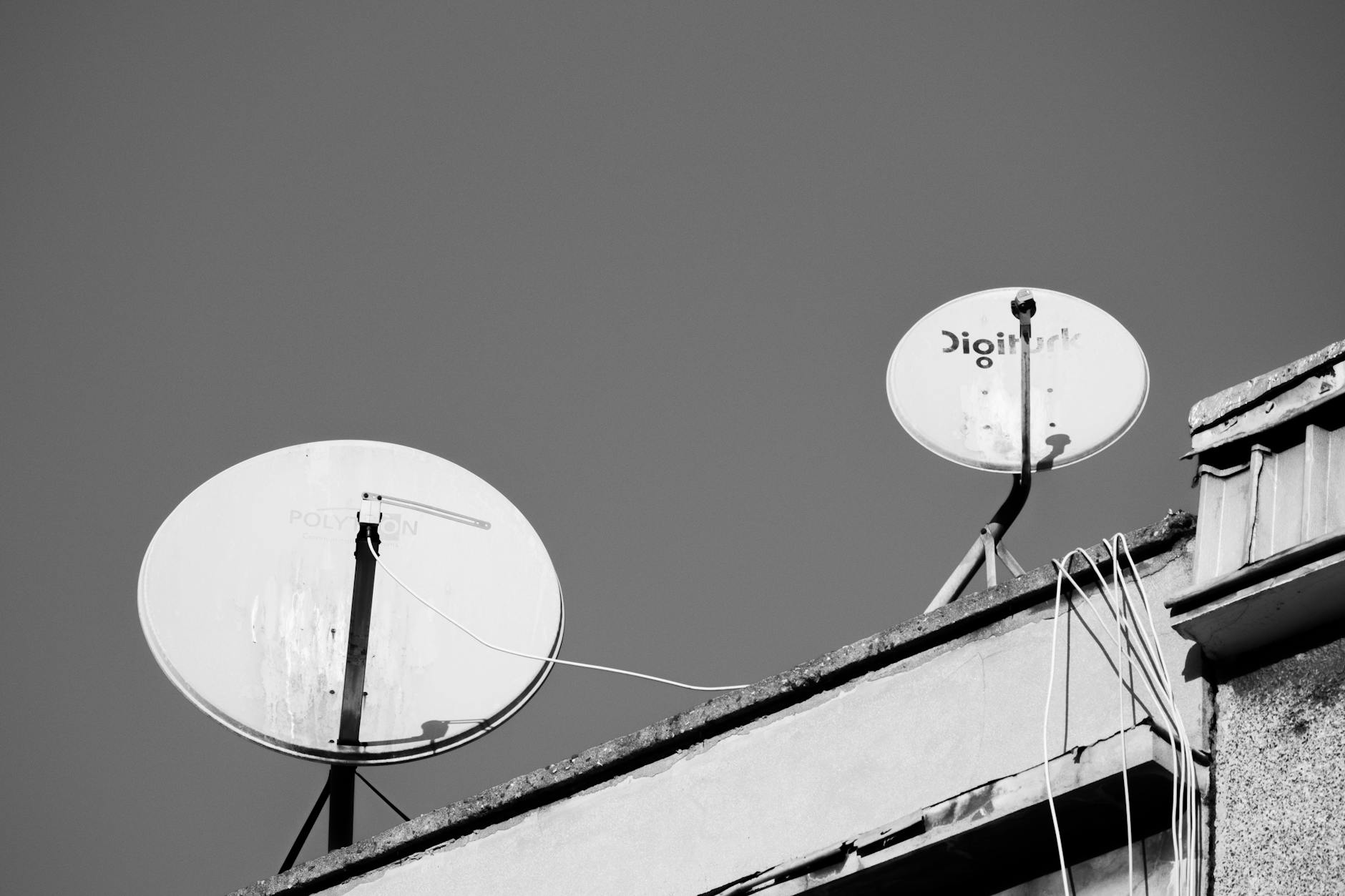 Photo by Yiğit KARAALİOĞLU
Photo by Yiğit KARAALİOĞLU
Understanding Your Satellite Receiver Menu
Nearly every satellite receiver has a simple menu for adding or editing frequencies. The exact steps can differ slightly, but most modern receivers follow a similar flow:
- Locate the “Menu” or “Settings” button on your remote.
- Navigate to “Installation,” “Antenna Setup,” or “Transponder List.”
- From here, you can choose the satellite (e.g., Thor 0.8° West for Swedish channels).
- Look for an option to add, edit, or scan frequencies.
Manufacturers often label these steps with different names, but the process remains consistent. Some receivers even offer a “Quick Setup,” while others require you to input each detail.
Gathering the Correct Frequency Details
Before adding new SVT frequencies Thor 2025, you’ll need to have the latest numbers ready. Here’s what you need:
- Satellite position (e.g., Thor 0.8° West)
- Frequency in MHz (like 12034 for SVT1)
- Polarization (Horizontal or Vertical)
- Symbol Rate (as per latest SVT channels frequencies Thor Satellite August 2025 update)
- Encryption status (for free-to-air, no smartcard needed)
Keep a printout or screenshot of the updated SVT channel list Thor Satellite beside your TV for quick access. Entering an incorrect number is the most common mistake and can prevent channels from showing.
Manual Frequency Entry: Step-by-Step
Once you’re in the transponder (frequency) setup, follow these steps to add or update frequencies:
- Select the Satellite – Choose Thor 0.8° West in the receiver’s menu.
- Add New Frequency – Pick “Add Transponder” or “Manual Frequency Entry.”
- Input Details – Enter the new SVT frequencies Thor 2025:
- Frequency: e.g., 12034
- Polarization: Horizontal (H) or Vertical (V)
- Symbol Rate: e.g., 27500 or 30000
- Save the Entry – Confirm with “OK” or “Save.”
- Scan for Channels – Select “Scan” or “Search” to automatically find all channels on that transponder.
- Check the Channel List – Once the scan finishes, scroll through your channels to ensure SVT1, SVT2, and TV4 are now included.
Some receivers also allow a “Blind Scan,” which finds all available frequencies, but manual entry ensures you only bring in what you want. If you encounter any issues, referring to guides like the Astra Hotbird Intelsat Transponders Update will help verify settings are correct.
Common Mistakes and Troubleshooting
Adding new frequencies should be straightforward, but even seasoned users hit snags. Here are frequent problems and how to solve them:
- No Signal Detected: Double-check the dish alignment and ensure the dish hasn’t been moved.
- Wrong Polarization: If the picture is missing or channels don’t load, swapping H/V might fix it.
- Incorrect Symbol Rate: Enter symbol rates as listed; even a small error means no lock.
- Encryption Warnings: SVT and TV4 are free-to-air as of the current SVT satellite frequencies August 2025, but if you see “scrambled,” confirm you used the FTA transponder.
Small tweaks make a big difference in reliability. Remember to periodically check for adjustments in the new SVT frequencies Thor 2025 to avoid outages.
Tips for Multi-Satellite and Advanced Setups
For viewers who want both Scandinavian and German or other free-to-air channels, some receivers offer multi-satellite support. In this case:
- Set up multiple LNBs or use a motorized dish.
- Repeat the manual entry process for each satellite’s transponders.
- Store the channel list regularly, especially after large scans or updates.
More detailed how-tos for advanced configurations, such as loading specific firmware or using receivers like MEO, can be found in resources like the How to Install iCam OSCam for MEO Receivers in 2025.
Quick Reference Table: SVT Channel Frequency Details
| Channel | Satellite | Frequency (MHz) | Polarization | Symbol Rate (KS/s) | Encryption |
|---|---|---|---|---|---|
| SVT1 | Thor (0.8° West) | 12034 | Horizontal | 27500 | Free-to-Air |
| SVT2 | Thor (0.8° West) | 11862 | Vertical | 30000 | Free-to-Air |
| TV4 | Thor (0.8° West) | 12303 | Horizontal | 30000 | Free-to-Air |
Having this table handy makes manual entry much faster and limits mistakes when updating your receiver.
Staying Updated for Reliable TV Access
Technical changes happen throughout the year, so it’s smart to check for the latest SVT channels frequencies Thor Satellite August 2025 update every few months. Take a few minutes to enter any changes, and your Swedish channels will keep coming through without interruption.
Those looking for a broader list of frequencies and regular updates across multiple satellite platforms can follow the CCcam2 Official Blog for ongoing tips and bulletins on new frequency releases and satellite news. Staying proactive takes just a moment but guarantees you enjoy smooth satellite TV viewing.
Satellite TV vs. IPTV: Provider and Technology Comparison for 2025
The debate between Satellite TV and IPTV is front and center for anyone wanting the most reliable way to watch Swedish free-to-air channels like SVT1, SVT2, and TV4 in 2025. Both methods bring live TV into your home, but how they work, what you need, and what you actually get can be quite different. If you’re choosing how to stay updated with the latest SVT channels frequencies Thor Satellite August 2025 update or considering a new SVT frequencies Thor 2025 setup, this comparison makes that choice clearer.
 Photo by Adem Erkoç
Photo by Adem Erkoç
Key Differences in Broadcast Technology
While both Satellite TV and IPTV deliver live TV, their technical approach sets them apart:
- Satellite TV beams signals directly from orbiting satellites like Thor (0.8° West) onto your dish, meaning you can enjoy TV even with slow or unreliable internet connections.
- IPTV (Internet Protocol Television) uses your home internet to stream channels, making your broadband speed and stability the foundation of your experience.
With satellite, you’re tuning directly into the broadcaster’s feed, often in real time. IPTV depends on a provider’s ability to keep streams up and buffer-free, which can fluctuate with internet congestion or outages.
Provider Choices: Satellite vs. IPTV in 2025
Selecting a provider depends on your location, needs, and local infrastructure. Here’s a quick rundown of what each typically offers:
| Feature | Satellite TV (Thor, Astra, Hotbird) | IPTV |
|---|---|---|
| Signal Delivery | Satellite Dish, LNB, Receiver | Broadband Internet & IPTV Box/App |
| Outages Affected By | Weather, Obstructions | Internet Issues, Server Downtime |
| Channel Availability | High for FTA. Consistent. | Depends on Provider’s Licenses |
| Latency | Minimal (good for live events) | Can be higher (delays in live shows) |
| Regional Blocking | Minimal, especially for FTA channels | Common due to geo-restrictions |
| Setup Cost | Dish, receiver (one-time) | No dish, but needs fast internet |
| Ongoing Fees | None for FTA | Often requires subscription |
The updated SVT channel list Thor Satellite demonstrates that, for Swedish public TV, satellite users get channels like SVT1, SVT2, and TV4 without geographic restrictions or subscription renewals. IPTV, however, often blocks access outside authorized regions.
Reliability and Quality: What to Expect
Viewers want hassle-free TV—no buffering, lost signals, or blurry pictures. Here’s how satellite and IPTV stack up in 2025:
- Satellite TV handles live sports, news, and HD content with stable quality, thanks to direct satellite links and the latest SVT satellite frequencies August 2025 updates. Heavy rain can cause brief outages (“rain fade”), but these are rare with a correctly installed dish.
- IPTV can shine when your broadband is strong, delivering high-definition and on-demand options. However, streaming SVT1 or TV4 live can lag during peak hours, especially in shared housing or rural areas with slower internet.
For many in Scandinavia and across Europe, satellite remains the gold standard for free-to-air Swedish broadcasts. Those in urban centers or with premium fiber connections might find IPTV appealing for its flexibility and on-demand extras.
Practical Setup: Which is Easier?
Ready to get started? Each method has a learning curve:
- Satellite TV setup involves pointing a dish, inputting the latest SVT channels frequencies Thor Satellite August 2025 update into your receiver, and running a scan. For most, this is a one-off job. The biggest hurdle is making sure nothing blocks your dish—think trees, buildings, or heavy snow.
- IPTV needs a compatible device (smart TV, streaming box, or app), a stable high-speed internet connection, and often a subscription. There’s less DIY skill needed, but more dependence on your provider keeping things maintained.
The satellite approach rewards you with years of subscription-free access to the current SVT satellite frequencies August 2025, while IPTV might swap out ease for recurring monthly fees and the need to troubleshoot network hiccups.
Which is Right for Swedish Free-to-Air TV in 2025?
For Swedish channels, especially those listed in the updated SVT channel list Thor Satellite, satellite shines for free, unfiltered access across Europe. The dish and receiver you buy this year will keep on working with the latest frequency adjustments, without worrying about software changes or account bans.
IPTV can be a strong backup, especially if you want to combine Swedish with other international channels or love streaming. If you rely on IPTV, remember that changes in licensing or streaming rules could affect access to SVT, TV4, or similar channels without warning.
For the full scoop on expanding into English or other European free channels, you can check the latest tips in the Free English Satellite TV Channels 2025 update, which also covers tips for stable satellite viewing in any region.
Both satellite and IPTV have their loyal fans, but for stable, unrestricted Swedish free-to-air TV in 2025, satellite stays on top—especially with the regular updates to frequencies and coverage you get from the Thor Satellite. With a bit of setup, you can enjoy smooth viewing year-round.
Exclusive Events: Watching Sports and Culture Live via Satellite
The excitement of watching exclusive live events, like major sports matches and cultural broadcasts, is unmatched when you catch them in real time directly from Swedish free-to-air satellite channels. With the latest SVT channels frequencies Thor Satellite August 2025 update, fans of SVT1, SVT2, and TV4 can access a front-row seat to headline moments—right from their living room, whether they’re in Sweden or abroad.
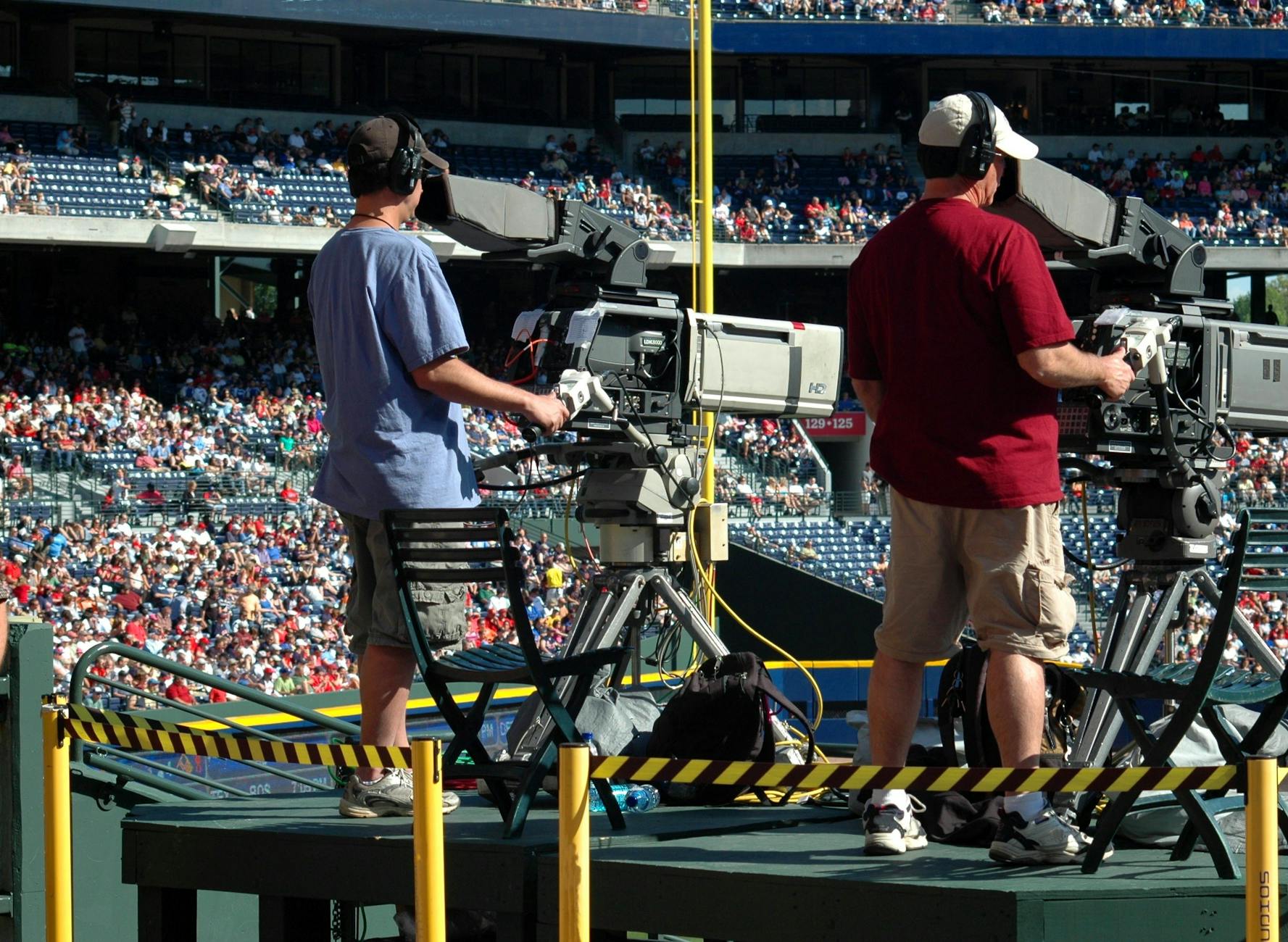 Photo by Pixabay
Photo by Pixabay
Live Sports: Never Miss a Match
Few things bring Swedes together like top-level sports. From Allsvenskan football to the World Ice Hockey Championships, and key European tournaments, moments of drama unfold on free-to-air Swedish channels every week. Thanks to the updated SVT channel list Thor Satellite, viewers enjoy instant access to:
- Live broadcasts of football, hockey, handball, and winter sports
- Exclusive coverage of Olympic and World Cup events
- Real-time match commentary and expert analysis
Satellite’s strength is its reliability. Even when streaming services buffer or local TV blocks content, anyone with the current SVT satellite frequencies August 2025 and a clear dish setup can follow every goal, save, or finish line moment as it happens.
Catching these events live is more than just entertainment—it’s a way to stay connected with friends and family, especially for Swedes living overseas. With the right frequencies, you won’t miss the national anthems, crowd roars, or those split-second victories that everyone will be talking about the next day.
Culture and Special Broadcasts on Free-to-Air Swedish TV
Sweden’s public broadcasters go beyond sports. SVT and TV4 keep audiences close to home during big cultural moments, even when you’re thousands of miles away. The new SVT frequencies Thor 2025 mean you get a front seat to:
- Annual concerts and festivals like Melodifestivalen (Sweden’s renowned Eurovision qualifier), Nobel Prize ceremonies, and Midsummer celebrations.
- Live coverage of royal occasions, state news, and public addresses.
- Cultural documentaries, Swedish drama premiers, and film nights available to all without subscription barriers.
Events like these create unity and shared experience. Tuning in via satellite adds an extra layer of authenticity, especially when watching with family gathered around or sharing moments with friends on social media.
For viewers craving even more cultural programming, other Scandinavian and German channels often available on the same satellite setup extend your viewing possibilities, letting you catch everything from international film awards to special holiday programming.
How Satellite Access Makes a Difference for Exclusive Events
Why do so many choose satellite TV for live exclusives, even in the age of streaming? Here’s what sets satellite apart for big events:
- Stable Signal: No buffering during climactic sports moments or cultural milestones.
- HD Quality: Clear, high-definition broadcasts via modern Thor satellite transponders.
- No Geo-blocking: Wherever you are in Europe (and often beyond), you can watch the same events as someone in Stockholm, thanks to free-to-air access.
Satellite TV’s broadcasting model also means these experiences aren’t hidden behind expensive subscriptions. With the right dish and the latest SVT channels frequencies Thor Satellite August 2025 update, you keep your spot in the crowd—no login required.
If you want to expand beyond Swedish channels, combining your SVT setup with top German, UK, or French free-to-air frequencies brings even more exclusives right into your living room. Guides for adding international signals are easy to follow, especially if you need a technical boost or want to try out new hardware. The Best CCcam and Oscam servers setup guide is a reliable resource for those looking for advanced tuning, ensuring you’ll never miss a headline event.
With satellite TV, your connection to Sweden’s biggest sporting and cultural moments stays strong and unrestricted, year after year.
Conclusion
Staying current with the latest SVT channels frequencies Thor Satellite August 2025 update means fewer interruptions and the best Swedish free-to-air TV experience. Keeping a close eye on frequency changes and maintaining your satellite receiver setup allows you to enjoy reliable access to SVT1, SVT2, TV4, and more without ongoing costs. Bookmarking trusted frequency guides is the easiest way to stay informed and make quick updates each season.
Free-to-air satellite TV continues to deliver unmatched value for live sports, Swedish culture, and major events, no matter where you live in Europe. As technology advances and broadcasters update their platforms, staying informed ensures you never miss out. Your dedication to checking for new SVT frequencies Thor 2025 secures your seat at every headline Swedish event. Thank you for tuning in—share your setup tips, favorite moments, or questions in the comments below.


